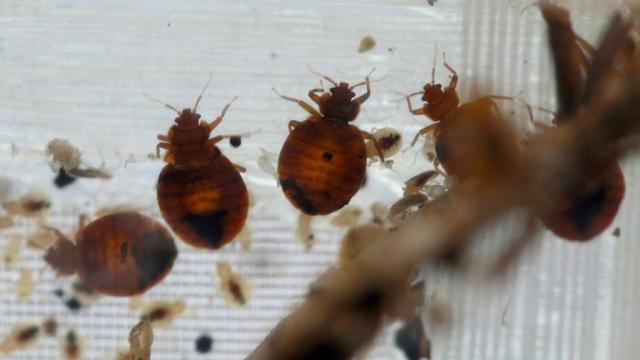Bed bugs – the blood-sucking, chitinous nightmares which serve as the clearest proof that if there is a divine creator behind the universe, it hates us – were once nearly eradicated. But in recent years they have come back worse than ever, beefed up from decades of exposure to insecticides and helped along by an increase in global travel and a decrease in public knowledge of how to fight them.
Trust me: You do not want these things getting anywhere near your house. They leave disgusting welts, can hide anywhere, are beyond the ability of all but the most obsessive amateur to control, and the internet is littered with horror stories about failed attempts to eradicate them. Although an infestation can happen to anyone, they also carry a huge social stigma. But if bed bugs do happen to you, please don’t try to spray them with alcohol near open flames.
Per the Washington Post, on Friday night a woman set a multi-family residence ablaze in Cincinnati’s Avondale neighbourhood after spraying alcohol on the insects, starting a fire when the alcohol came into contact with a flame. As a result of the ensuing fire, Fox 19 reported, at least three people had to go to the hospital. At least 10 people cannot return to the building, which sustained $333,000 in damage.
“When I got here the whole house was on fire,” resident Kamaron Lyshe told Fox 19. “I’m kind of dealing with it now. I’ll start from scratch. It’s like a dream… everything is burnt. I’ll start fresh. It’s all we can do now.”
According to Fox 19, the Cincinnati Fire Department says the incident is the second fire started by someone trying to kill bed bugs in the last two weeks alone. Per CBS, the last fire involved someone spraying the critters with alcohol and setting them on fire, though the individual responsible for that incident was a 13-year-old boy.
This all really sucks for the people involved, and it’s part of a trend. As the Post noted, surveys in recent years have shown high bed bug infestation rates at the same time they’re getting more difficult to kill. The result has been a number of incidents in which DIY extermination attempts went wrong.
Bed bugs have been developing resistance to many of the most common pesticides as well as some newer ones at a horrifying rate, with research indicating that they have developed thicker cuticles and the ability to break down toxic chemicals with enzymes. In fact, the critters are now so resilient that many of the effective treatments left are considered too dangerous to use on the inside of occupied residences.
Since 2006, the cost of exterminating the things has shot to an estimated $333 million across the US alone, annually. In some places like New York City, stringent pest-control laws require landlords to cover the cost of a professional exterminator – elsewhere, in places with differing laws, renters might be given the unpleasant choice between paying hundreds or even thousands of dollars for a professional or trying to wipe out the infestation themselves.
For those stuck dealing with these evil vampires, a Science News report from 2013 noted that rubbing alcohol is a subpar solution, as it only works on direct contact and even then kills only about half of the bugs in laboratory conditions. Other solutions with a bad track record included mothballs and essential oils.
The best solution is preventing them from coming home with you, such as by securing luggage in plastic bags while travelling. But that’s not very helpful advice if the bed bugs are already there.
If one does have to go it alone, I won’t lie about your chances, but exterminators generally recommend sealing mattresses in bed bug-proof encasements, isolating beds from walls, washing bedding and clothes, and then using a combination of hot steam, spray pesticide, and bed bug powders (amorphous silica gel is far better than diatomaceous earth) to set up a no man’s land between your bed and any potential harborages. Potentially infested possessions can also be heated in a device like a PackTite, or gassed in sealed containers with DDVP pest strips, though the Centres for Disease Control has officially warned misuse of DDVP carries serious health risks. Your best bet, unfortunately, is always going to be a professional exterminator.
